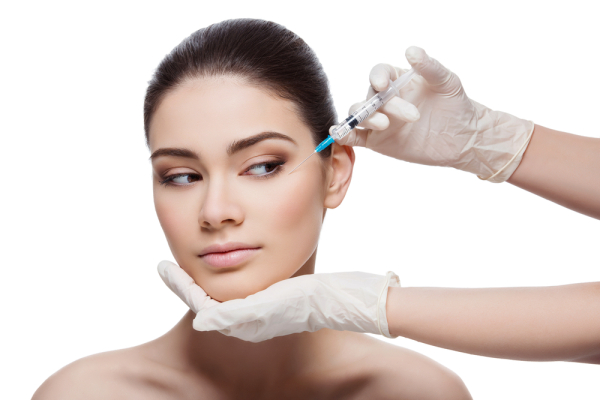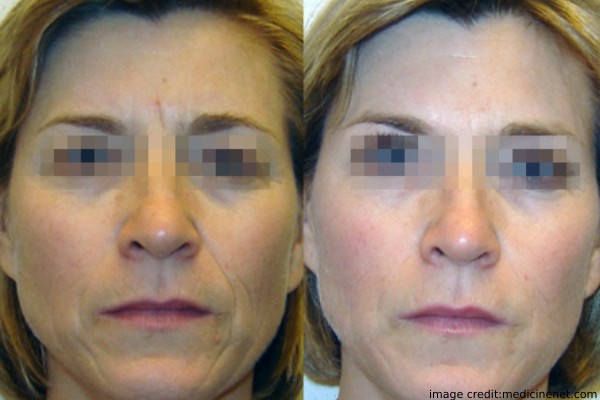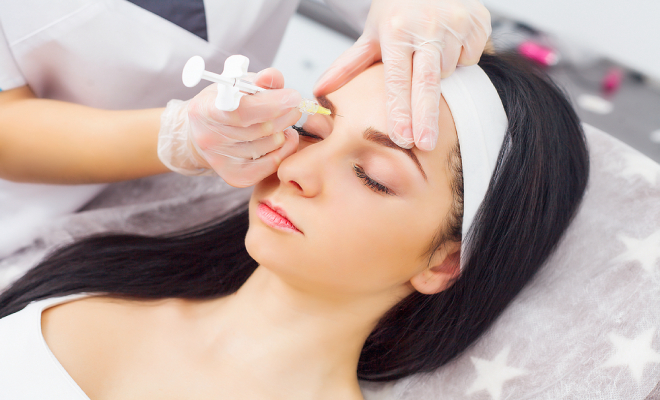Most of us have probably heard a couple of horror stories about the terrible side effects of Botox injections.
While there is no doubt that these actually happen, what are the chances that you might experience them, and in what ways can you avoid them?
Especially if you’re planning to undergo the procedure for medical or cosmetic reasons, it is always nice to have an idea of what you will be dealing with to allow you to weigh your decision carefully about whether or not it would be worth it.
While Botox injections are common solutions to many conditions and problems, they do elicit mild to severe side effects when done incorrectly by inadequately trained people.
For more information about Botox and its side effects or the risks involved, keep reading below!
What Is Botox?

Lifiting Botox Injection – Image/Shutterstock
Botox is the brand name of the botulinum toxin that comes from the bacterium Clostridium botulinum and can cause botulism in large quantities.
Botox is technically not the toxin itself but is actually a protein derived from it.
Although one serious complication of botulism is paralysis, it has been discovered that the administration of small, diluted amounts of these toxins can provide benefits and relief to several conditions by the weakening or inactivation of local, specific muscles.
There are also different variations or types of the toxin, namely Onabotulinumtoxin A, Abobotulinumtoxin A, and Incobotulinumtoxin A[1], which are available and known under a wide range of brand names.
Botox usage was safely approved by the FDA in the late 1980s to treat conditions like uncontrolled blinking and lazy eye.
However, from 2002 up until today, the procedure has gained popularity in the cosmetic field through the use of Botox treatment for facial wrinkles and fine lines on the forehead, upper lips, around the mouth, and on the neck by paralyzing the muscles temporarily.
Botox Injections Pros and Cons:

Botox Injections Pros and Cons – Image/Shutterstock
Just like in any other procedure or treatment method, Botox comes with a number of benefits and disadvantages.
The benefits include:
- Stops uncontrolled blinking (blepharospasm) and lazy eye (strabismus)
- Lip plump or Botox fillers
- Reduces facial creases, frown lines, glabellar lines, wrinkles, and similar conditions. The most common applications for cosmetic improvement today are Botox injections on the forehead, around eyes, lips.
- Anti-aging treatment. Most people claim and believe that when comparing Anti-aging cream vs Botox Injection, the latter has more immediate long-lasting effects.
- Treatment of chronic migraines, axillary hyperhidrosis, limb spasticity, and cervical dystonia.
- Control or treatment of muscular spasms associated with conditions like hemifacial spasms, benign essential blepharospasm, temporomandibular joint disorder, fibromyalgia, and cerebral palsy.
- Management of excessive underarm sweating
Check out these Botox before and after photos:

Botox before and after – Image/Shutterstock
Generally, the side effects of Botox injections only occur when an inexperienced or non-licensed doctor performs the procedure without the use of proper techniques and approved form of the toxin.
These possible Botox side effects can range from mild to severe and may include:
- Bruising, bleeding, redness, infection, swelling, and pain at the injection site
- Cockeyed eyebrows or droopy eyelids when the toxin gets to the eyebrow muscles.
- Severe headaches
- Fever and other flu-like symptoms
- Dryness of the eyes, excessive tear production, keratitis or corneal inflammation, eye, ptosis or droopy eyelids, irritation of the eyes, increased light sensitivity, double vision, reduced blinking, bruising, and swelling of the eyelids are some of the Botox injection side effects when it is used to treat blepharospasm.
- Allergic reactions, rashes, and itching.
- Back pain.
- Neck pain and muscle soreness are Botox injection side effects in the neck.
- Urinary tract infections or difficulty in urinating because of a burning or stinging sensation.
- Stomach pain and diarrhoea.
- Loss of appetite.
- Muscle stiffness or weakness.
- Shortness of breath.
- Difficulty swallowing.
- Nausea, drowsiness, and dizziness.
- Coughing, dry mouth, or a sore throat.
- A runny nose and cold symptoms.
- Respiratory infections.
- Feeling tired and anxious.
- A ringing in the ears.
- Too much sweating in other areas aside from the underarms.
Administration of Botox injections with other agents like curare and aminoglycosides may cause negative side effects on the neuromuscular function.
The side effects of Botox on the forehead and around the eyes include swelling, redness, pain, swelling, and bruising at the injection site.
Some people may also experience symptoms of allergic reactions like skin rashes, headache, asthma, dry mouth, itchy skin, and dizziness.
This happens when the Botox injections around the eyes and forehead are applied wrongly, hits the surrounding nerves, and travel or migrate to other areas where it was not intended, leading to muscle twitching, numbness, and droopy eyelids.
These effects, although temporary, may last for up to a month before returning to normal.
Although highly unlikely, some of the botulinum toxins could spread to other parts of the body and elicit signs and symptoms similar to botulism.
Call your doctor immediately if you experience any of the following within hours or weeks after a Botox injection:
- Weakness of the muscles.
- Problems with your vision.
- Difficulty to speak or swallow.
- Trouble in breathing.
- Urinary incontinence or the loss of bladder control.
How To Avoid Botox Side Effects:
Although these side effects of Botox injection are only temporary, they can still put your health and life in danger and prolong your recovery time.
To avoid and prevent these side effects, it pays to know the risks before undergoing the procedure.
To do this, follow these tips:
- Make sure to consult and have a good, experienced, and licensed board-certified plastic surgeon to administer Botox injection to you.
- This way, you are assured that he or she knows the right dosage, amount, and application of the Botox.
- An existing infection on the intended injection site.
- Overactive bladder and incontinence.
- Bladder infection.
- Inability to urinate and do not use a catheter.
- Are pregnant or breastfeeding.
- A breathing disorder (emphysema or asthma).
- Lambert-Eaton syndrome.
- Myasthenia gravis.
- Amyotrophic lateral sclerosis.
- Difficulty swallowing.
- Weakness of facial muscles such as those of the eyebrows, eyelids, and forehead.
- Abnormal facial appearance.
- Heart disease.
- Bleeding issues.
- If you plan to undergo or have recently undergone surgery especially on the face.
- If you are taking blood thinning medications or have been injected with antibiotics.
- If you have undergone other Botox procedures in the past four months.
- If you have ever experienced any side effects of Botox in the past.
Do not receive a Botox injection if you are allergic to the toxin or are experiencing any of the following:
To make sure that a Botox injection is safe and appropriate for you, ask your doctor about the risks and be honest and open to them if you have:
While the side effects of Botox injection listed are not complete, this list already gives you a good overview.
Also, it is worth noting that most, if not all of these only occur when the procedure is incorrectly done by the wrong person.
FAQ’s:
Que: What are the side effects of Botox injections in neck?
Ans: Common side effects may include muscle weakness near the injection site, difficulty swallowing, muscle stiffness, dry mouth, loss of appetite, among others.
Que: How long after Botox do side effects occur?
Ans: The effects of a single treatment of Botox generally last 3 – 6 months, but full effects may not be visible for about a week.
Que: What are Botox long term side effects?
Ans: There may be facial pain and muscle weakness which at times might make eyelids droop and cause the vision to become double. These side effects disappear after continued use.
Que: When do Botox side effects go away?
Ans: Most Botox side effects are usually temporary and should begin to dissipate within a few days.
Conclusion:
Aside from the mentioned tips, it is always important for Botox to be exclusively used under your doctor’s supervision and care as it can be very dangerous if not performed properly.
Depending on your condition and desired effect, consult your general physician for referrals to make your Botox experience a safe and effective one.
A skilled and experienced doctor who specializes in your condition will be able to advise whether or not Botox injection is the best treatment for your health needs.
 By Wendy Gould
By Wendy Gould





